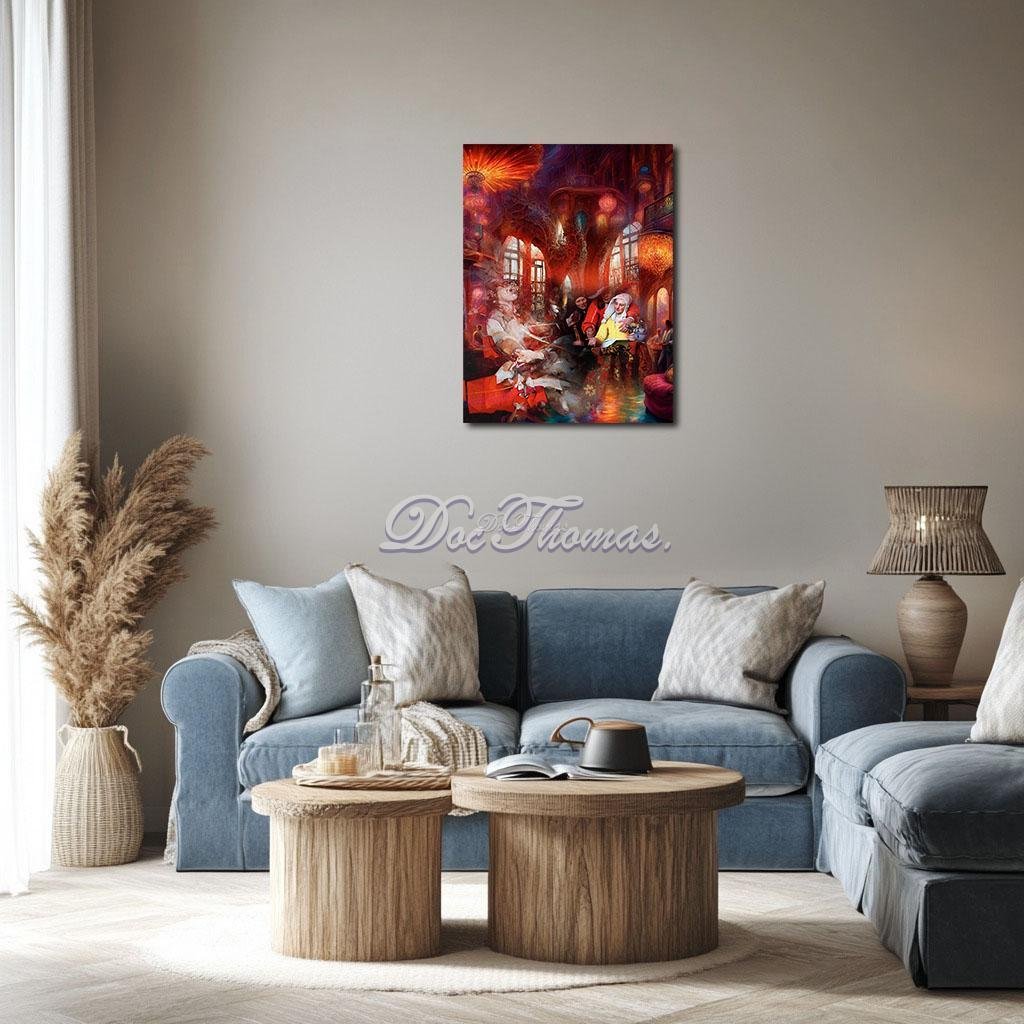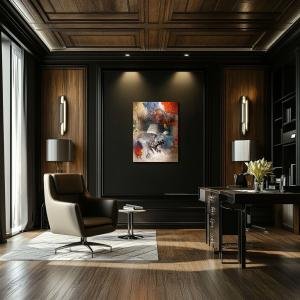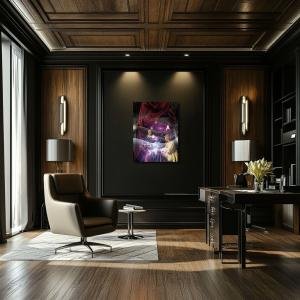Veins of Porcelain: The Crimson Architecture of Consent
Veins of Porcelain: The Crimson Architecture of Consent transforms Vermeer’s The Procuress into a surreal red-lit dreamscape of ritualized intimacy and blurred morality. The figures are immersed in a baroque chamber of glowing lanterns and velvet shadows, where desire, currency, and silence merge. The woman’s vivid yellow jacket radiates tension, while smoky apparitions of memory flicker around her. Reds dominate—lush, warm, and threatening—while flickers of gold and deep shadow hint at power, seduction, and cost. In this haunting reimagining, intimacy becomes architecture, and the transaction at the center is wrapped in velvet and flame.
Please see Below for Details…
Hotline Order:
Mon - Fri: 07AM - 06PM
404-872-4663
Veins of Porcelain: The Crimson Architecture of Consent reimagines Johannes Vermeer’s The Procuress through a baroque fever dream of excess, color, and heat—recasting a moment of transactional intimacy within an opulent, red-drenched cathedral of desire. Vermeer’s quiet yet unsettling scene, where a woman is paid for her company under the watchful eye of a third party, becomes here a phantasmagoric theatre of layered seduction, illusion, and discomfort. The viewer is pulled into a realm where everything glows too brightly, where velvet shadows conceal intentions, and where the architecture seems to breathe with the same rhythms as the bodies within it.
At the heart of this vision remains Vermeer’s triangular arrangement: the young woman with flushed composure, the grinning man extending coin and contact, and the procuress herself—half guardian, half merchant of warmth. But now, they are submerged in a palace of lamp-lit whispers and lantern-bloomed fever. The entire space swells with red—vermillion domes and velvet reflections, coral and cinnabar walls that throb like arteries carrying wine, money, and longing. This is not a room; this is a heartbeat made visible. The once-murky tavern scene now unfolds within a dreamlike harem of glowing arches and murmured transactions.
As the artist, my intent in reimagining The Procuress was to illuminate the seductive systems of economy that frame desire—not merely as the exchange of coin for company, but as the ambient architecture that cloaks the transaction in warmth, comfort, and moral ambiguity. The red is not simply sensual—it is a warning, a camouflage. Crimson speaks of power and danger, of bloodlines and betrayals. Burnt orange in the chandeliers suggests both celebration and captivity—a warm embrace that hides a lock. Golds streak across the garments like wealth too bright to question, too warm to resist. The woman’s yellow jacket, once symbolic of cheerful femininity, here glows with unsettling intensity—a beacon and a brand all at once. Her white lace collar gleams not in innocence but in fluorescent contrast, the only clean punctuation in an otherwise blurred exchange.
The man who pays her grins with a shade of satisfaction too wide to trust. His jacket blends into the room’s decadence, painted with the same tones as the furniture and the very air. He is not a guest here—he is part of the structure. The woman, her body slightly turned away, is the focal point of the composition. Yet her expression, though still, carries the weight of knowing. She is not seduced, not entirely shamed—she is present, lucid, and weary of being the currency of someone else’s desire. The procuress behind her fades into a layer of gauze and shadow, her face almost lost, as though the system itself wishes to remain unseen.
Floating figures—abstracted memories of the original man on the left, painted in smoky transparency—recur as fragmented echoes. He is dazed, perhaps drunk, or suspended in a moment of pleasure or guilt. Around him swirl wisps of white smoke, disintegrating his form into dream. This ghostly overlay blurs the borders between present and past, between what is imagined and what is endured. The luxury of the room tries to drown discomfort in opulence, but it can’t quite succeed.
The ambient blues and purples that edge the shadows offer no cold comfort. They remind us that luxury is often built upon quiet sacrifice. The floor reflects light like a shallow pool, making it appear as though the whole scene takes place on the surface of a slow, glowing lake. Time itself seems syrupy here—nothing moves quickly; everything marinates in want.
This piece does not seek to condemn but to expose. It reveals the temperature of transactions. It shows how beauty can distract from harm, how desire can bloom under pressure, and how ritual can sometimes feel like shelter—even when it is a cage. In reimagining The Procuress , I allowed every element to speak, to drip, to pulse with its own story.
Add your review
Your email address will not be published. Required fields are marked *
Please login to write review!
Looks like there are no reviews yet.










